Almássy Krisztián
Interview with Almássy Krisztián.
You have a strong foundation in both medicine and art. How do these two disciplines influence each other in your work?
In today’s world, the majority of people practicing clinical medicine reject or simply do not deal with the psychological obstacles or traumas behind diseases. We forget that we are not treating the disease, but the whole person. However, the soul is inherent in all human existence. After all, the soul fills the body with “life”. With the help of art, I would like to draw attention to how the web of body-soul and emotions interact.
Art and medicine has a lot of mistery and intrest in people. Your background in dentistry gives you a deep understanding of anatomy. How does this knowledge shape your artistic exploration of the human body?
During anatomy classes, autopsy room exercises and basic theory classes, we learned everything from the cell structure to the entire human structure. However, the soul is so elusive for everyone, we know that it weighs 21 grams, but during my creation I wanted to form the quality of the soul, what kind of soul it is. Perhaps this is what attracted me the most.
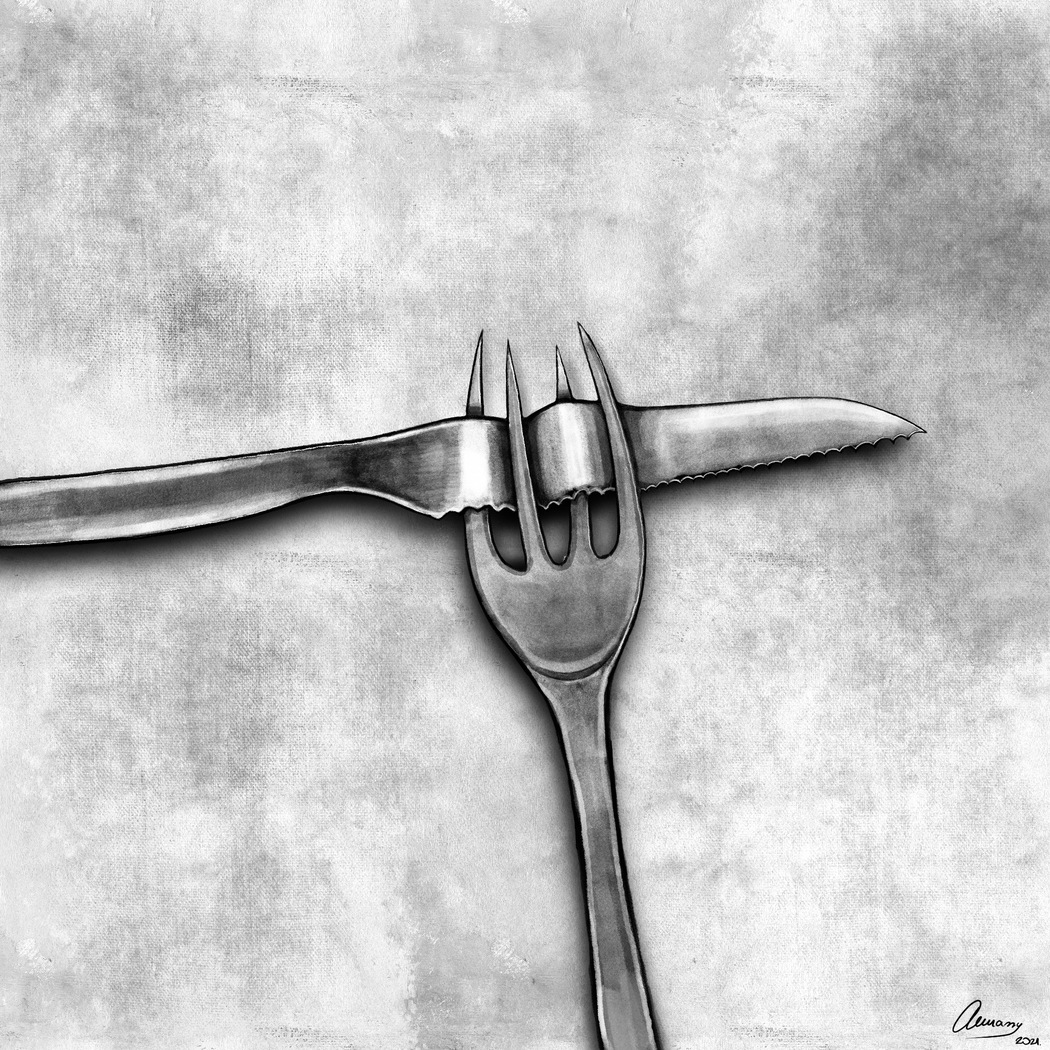 Almássy Krisztián | Hunger | 2021
Almássy Krisztián | Hunger | 2021
Your art often explores the anatomy and the fragile beauty of the human body. What initially drew you to this subject?
What initially drew me to the human body as a subject was its complexity and inherent vulnerability. The human form is simultaneously strong and delicate—capable of extraordinary things, yet so fragile and susceptible to injury or decay. I’ve always been fascinated by how the body is both a vessel for expression and a symbol of our mortality. Through my work, I aim to reveal the subtle beauty and intricate mechanisms of anatomy, while also confronting the fragile nature of life itself. It’s this contrast between strength and vulnerability that compels me to continue exploring the human body in my art.
In your project statement, you mention wanting to “peel off the skin of the superficial world.” Can you elaborate on how this concept is reflected in your artworks?
Nowadays, in the world of social media, we like to show others the better, more beautiful, perfect half of our lives. With my pictures, I want to show that deep down we all share the difficulties that we often sweep under the carpet. Our life path does not only consist of positive steps, this is what I wanted to convey with my painting of the sewing needle piercing the palm.
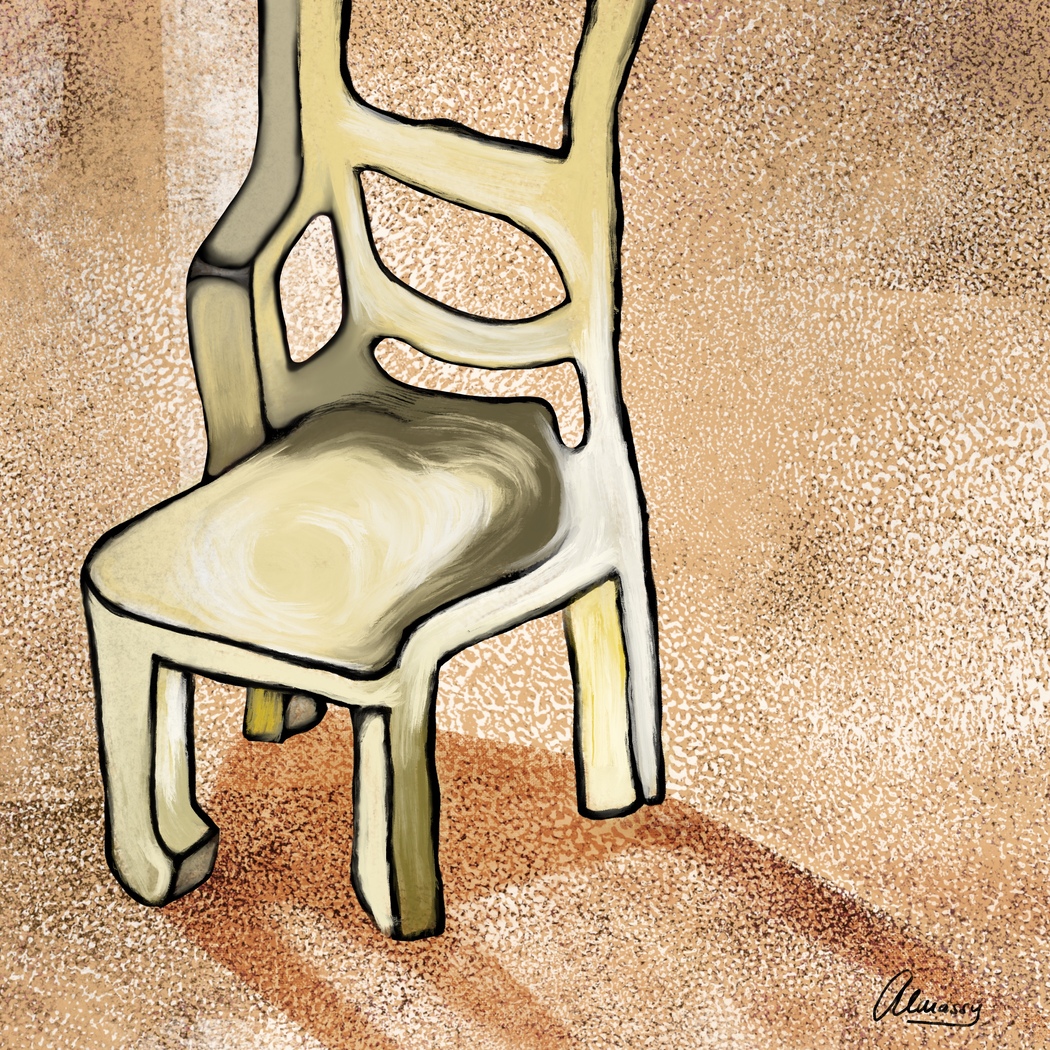 Almássy Kriszitán | Empty Chair | 2024
Almássy Kriszitán | Empty Chair | 2024
Your work seems to act as a bridge between medicine and art, both of which can be quite mysterious for many people. How do you hope your art helps viewers better understand their own bodies and lives?
I often get the comment from viewers at an exhibition that they simply feel the pain. I’m actually happy about that because they can use an image to start solving their own internal psychological obstacles, as am I. Another common comment is that they wouldn’t be able to look at it all day in their living room because they don’t want to go through the process of painful maturation with each look at the picture. Facing your pain everyday is hard, but necessary. I wish to help people face their deepest fears.
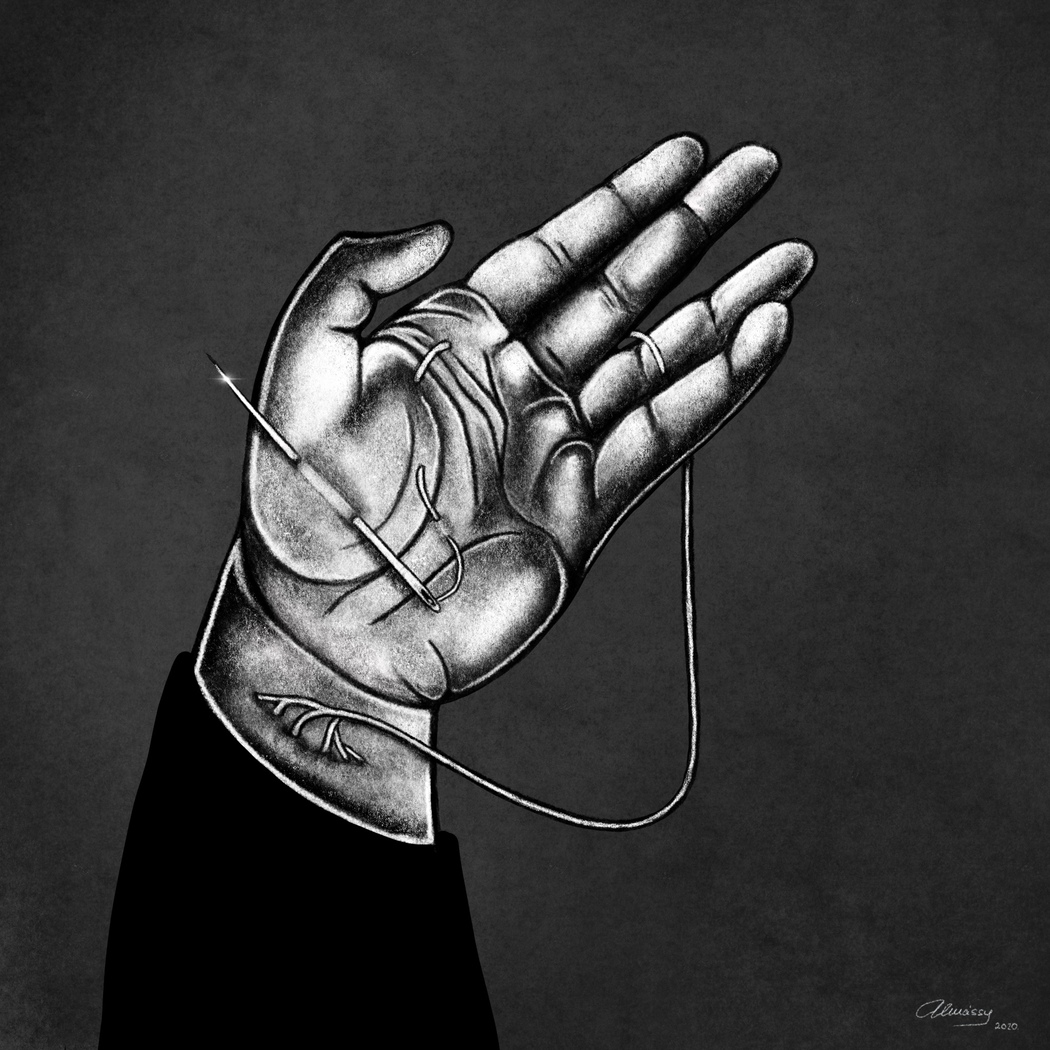 Almássy Kriszitán | Stich my stigmas, with the tread of you veins, again and again | 2020
Almássy Kriszitán | Stich my stigmas, with the tread of you veins, again and again | 2020
In your pieces like “Generational Trauma” and “Stich my stigmas, with the thread of your veins,” you reflect intense emotions and possibly personal pain. How do personal experiences influence your artistic process?
Like most artists, I can draw a lot based on my own life and my journey of self-discovery. Countless times I sat in front of a blank piece of canvas and only managed to project a work from above the universe onto the paper, which later made me realize what was the meaning. My work is a self-healing process, I mainly work with my subconscious.
 Almássy Kriszitán | The sights of 32 panels | 2020
Almássy Kriszitán | The sights of 32 panels | 2020
You work in both digital and traditional mediums. What are the unique challenges and advantages of each for expressing your artistic vision?
I started leaning towards digital painting and creations 5 years ago, mainly because during my university years I didn’t have much time to sit down and paint. People think that painting is fun, but in reality, you are doing serious mental work and you can get really tired of it, so it’s no wonder that you don’t have the energy to create after a hard day at university. However, thanks to the Ipad Pro device, on which I wrote my university notes, I found a great program called Procreat and started to learn the processes of digital drawing. I always had my tablet with me, so it was easier to just grab it during a lunch break or draw instead in the middle of a terribly boring lecture.
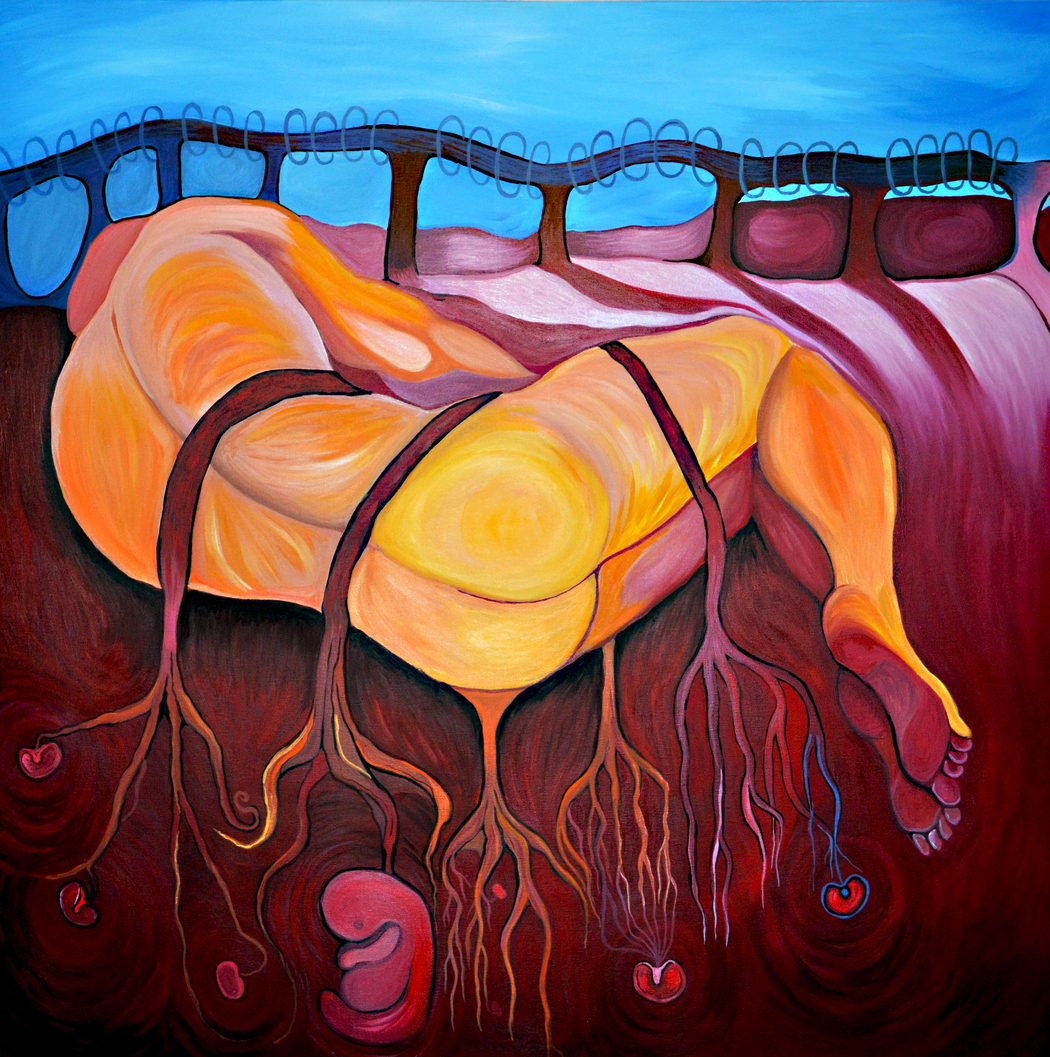 Almássy Krisztián | Generational trauma | 2023
Almássy Krisztián | Generational trauma | 2023

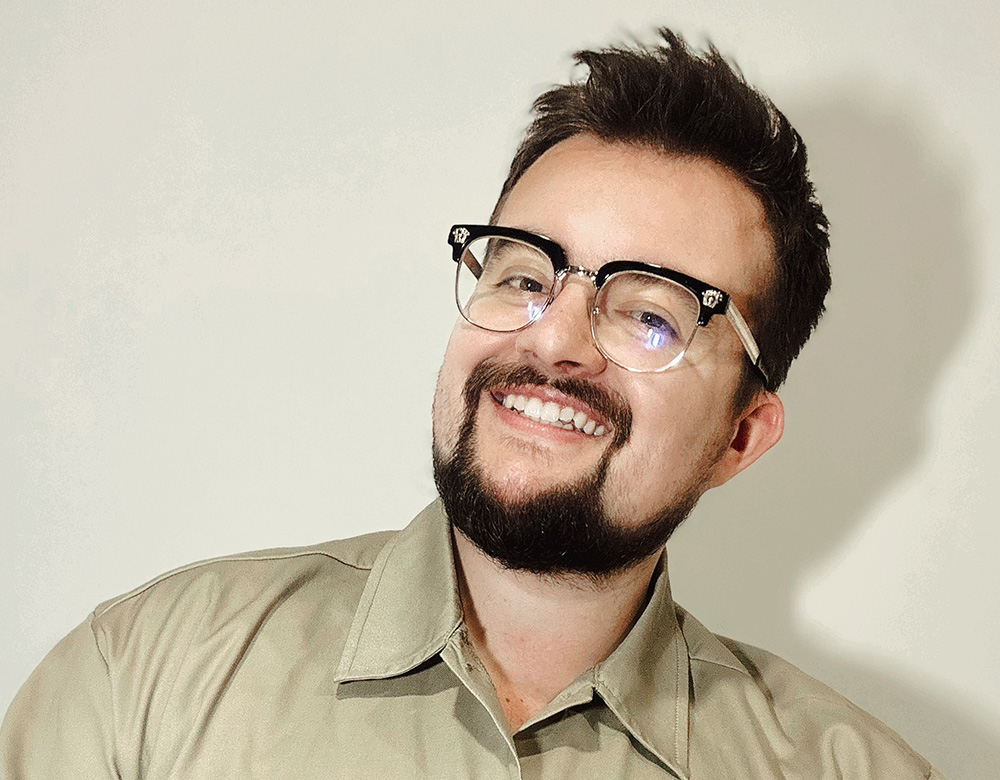
Leave a Reply